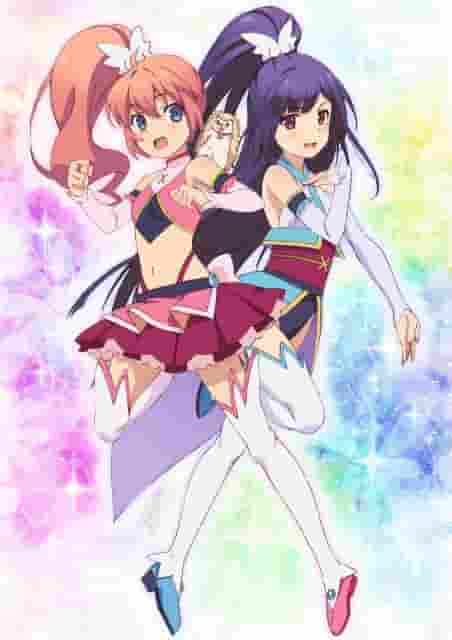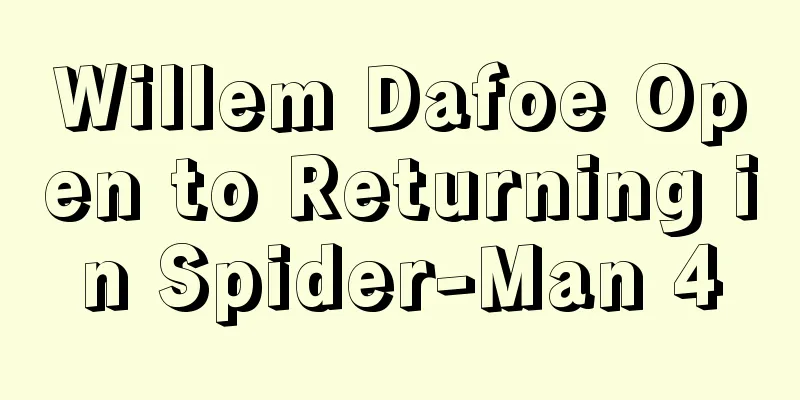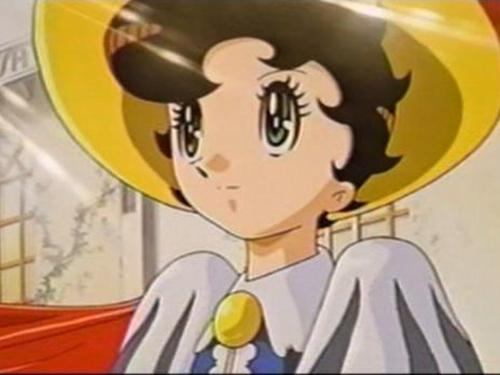The appeal and evaluation of "The Tale of the Shipwreck Part 2: Pirate Ship": A new development in maritime adventure

Shipwreck Story Part 2 Pirate Ship - Nonsense Monogatari Dainihen Kaizoksen■ Public Mediatheater ■ Original MediaAnime Original ■ Release date1931 ■ Number of EpisodesEpisode 1 ■Original StoryHideo Shimizu ■ DirectorAnimation/Director/Kenzo Masaoka ■ ProductionNikkatsu Taiho Comic Film Department ■Explanation"The Shipwreck Story, Part 2: Pirate Ship" is a 1931 Japanese animated film, an original anime work based on the story by Hideo Shimizu. The film was produced as a sequel to the first film in the Shipwreck Story series, "Monkey Island," and was produced by Nikkatsu's Taiho Animation Film Department. It was directed and illustrated by Kenzo Masaoka. The story begins when a child adrift on a raft in the middle of the ocean one day spots a sailing ship on the horizon. The child, who grew up on Sarugashima, does not realize that it is a ship, so when the crew of the sailing ship approach to try to help him, the child becomes frightened and tries to run away. After much effort, the child is rescued, but is unable to get along with the sailors. One day, a black sailing ship approaches rapidly. It is a pirate ship, and the fast sailing pirate ship quickly catches up, captures the crew alive, steals the cargo, and even kidnaps the princess. The child, who was hiding in the shadow of the pirate ship's sails and watching the commotion, is outraged that the princess has been kidnapped, so he jumps into the sea by himself and boards the pirate island. At the mansion on Pirate Island, a party is being held to celebrate the return of the pirate captain and his princess. The child reaches the entrance to the mansion on the island and is swallowed by the lion guarding the gate, but he manages to remove each bone from inside the lion's stomach, kill it, put on its skin, and enter the banquet hall. The surprised pirates chase them with bows and swords, but the child rescues the princess, helps the women and children escape, and escapes with the princess to the top of the mansion's tower. As they escape on a minecart along the rails that run from the top of the tower to the seaside, the pirates who had pursued them to the top of the tower are blown up by explosives set by the child. On the calm sea, the crew who had recaptured the pirate ship are waiting, and the child and princess are happily pulled up in a boat. ■ Evaluation and appeal of the work"The Tale of the Shipwreck, Part 2: Pirate Ship" is highly regarded as a unique work among Japanese animation films from the 1930s. The story unfolds dynamically and depicts the courage and wisdom of children. In particular, the scene where the child escapes from the lion's belly and the battle of wits where the child outwits the pirates leave a strong impression on viewers. This work is also an example of the advancement of animation technology. Masaoka Kenzo's drawings have a power of expression that goes beyond the technical standards of the time, and the visual appeal of the work as a whole is outstanding. In particular, the pirate ship chase scene and the explosion scene must have greatly amazed and impressed the audiences of the time. ■ Historical BackgroundThe year 1931 was the dawn of Japanese animation. Animation at that time was mostly hand-drawn and had many technical limitations. However, "Ninsensu Monogatari Part 2: Pirate Ship" overcame these limitations and is highly regarded as a work that combines narrative and visual appeal. This work was produced by Nikkatsu Taiho Animation Division, a major animation production company at the time. Nikkatsu Taiho Animation Division produced many excellent animation works and had a great influence on Japanese film history. "The Shipwreck Story, Part 2: Pirate Ship" is one of them, and is a work of historical value. ■Character AnalysisThe child protagonist of this work is portrayed as a brave and wise character. Having grown up on Sarugashima Island, he has never known what a ship was, and at first he is afraid and tries to run away, but gradually he shows an attitude of trying to solve problems on his own. In particular, the scene where he escapes from inside the lion's belly and the battle of wits where he outwits the pirates symbolize his courage and wisdom. Although the princess is portrayed as a victim who was kidnapped by pirates, she also shows her strength and courage in the scene where she escapes with her child. Her role as a support for the child who stands up to the pirates adds depth to the story. ■ Behind the ScenesThe production of "The Story of the Shipwreck, Part 2: Pirate Ship" was fraught with difficulties. Due to the technical limitations of the time, the drawing and directing required a lot of time and effort. However, thanks to Kenzo Masaoka's passion and talent, the film was completed and deeply moved the audience. Although this work is based on the original work by Hideo Shimizu, there are some parts that deviate significantly from the original. In particular, the adventure on the pirate island and the explosion scenes are depicted with the expressive power that only animation can provide. These scenes are highly regarded for their visual appeal and narrative quality. ■Reasons for recommendationI would recommend "The Story of the Shipwreck, Part 2: Pirate Ship" as a particularly unique work among Japanese animation films from the 1930s. The story unfolds very dynamically, depicting the courage and wisdom of children. Kenzo Masaoka's drawings, moreover, have expressive powers that go beyond the technical standards of the time, and the visual appeal enhances the entire work. In particular, the scene where he escapes from the lion's belly and the battle of wits where he outwits the pirates leave a strong impression on viewers. The chase scene on the pirate ship and the explosion scene must have greatly surprised and moved audiences at the time. These scenes are depicted with the expressive power that only animation can provide, and are highly regarded for their visual appeal and narrative quality. Furthermore, this work was produced by the Nikkatsu Taiho Animation Film Division, which has had a major impact on Japanese film history. The Nikkatsu Taiho Animation Film Division has produced many excellent animation works and has had a major impact on Japanese film history. "The Shipwreck Story, Part 2: Pirate Ship" is one of these works, and is a work of historical value. For these reasons, "The Tale of the Shipwreck, Part 2: Pirate Ship" is rated as a highly recommended work among Japanese animation films of the 1930s. This work, which combines visual appeal and narrative, will leave a strong impression on the viewer and move them. |
<<: "Kaumori" Review: A Captivating Story and Deep Characters
>>: Review of "Shipwreck Story Part 1: Sarugashima": A moving story of adventure and friendship
Recommend
Waimo-kun's Journey: A Thorough Review of a Moving Story of Adventure and Growth
Waimokun's Journey - Waimokunnotabi - Reviews...
The birthday of Japanese horror master Junji Ito comes with his wild and bizarre horror ideas
July 31st is the birthday of Junji Ito, the maste...
The horror details of the online drama "Yunnan Worm Valley" are even more thrilling and scary
"Yunnan Worm Valley" starring Pan Yuemi...
The appeal and evaluation of the second short anime series "Golden Kamuy"
Golden Kamuy Golden Doga Gekijyo review and detai...
Russo Brothers: Will Not Return to Marvel Cinematic Universe Until 2030
The Russo brothers, directors of Captain America:...
Grand Blue Review: A whirlwind of youthful brilliance and laughter
Comprehensive evaluation and recommendation of Gr...
John Woo: The black female lead of the American version of "The Killer" withdrew and also talked about Marvel
John Woo recently revealed at the Hawaii Internat...
New stills of the live-action movie "Dynasty Warriors" show Lü Bu, Cao Cao and others appearing
Recently, new stills from the live-action movie &...
Black Butler Extras: The Appeal and Evaluation of the OVA
The appeal and reviews of "Black Butler"...
Midway: New Chinese trailer shows fierce sea and air battle between US and Japanese forces
Today (October 29), the new Chinese trailer for t...
Newspaper boss JK Simmons signs Spider-Man deal with Sony
In the post-credits scene of Spider-Man: Far From...
Queen Studios' 1/1 bust of Rocky from the TV series Rocky sells for 22,900 yuan
Recently, the famous model manufacturer Queen Stu...
"Borderlands" movie stills wonderfully restore the landscape of Pandora
The movie "Borderlands", adapted from t...
Review of "The Soul of the No. 1 Man in Japan 2": An anime that pursues the ultimate in masculinity
The Soul of the No. 1 Man in Japan 2 - In-depth r...
New Star Wars series revealed as space version of Stranger Things
Rumor has it that Spider-Man 3 director Jon Watts...









